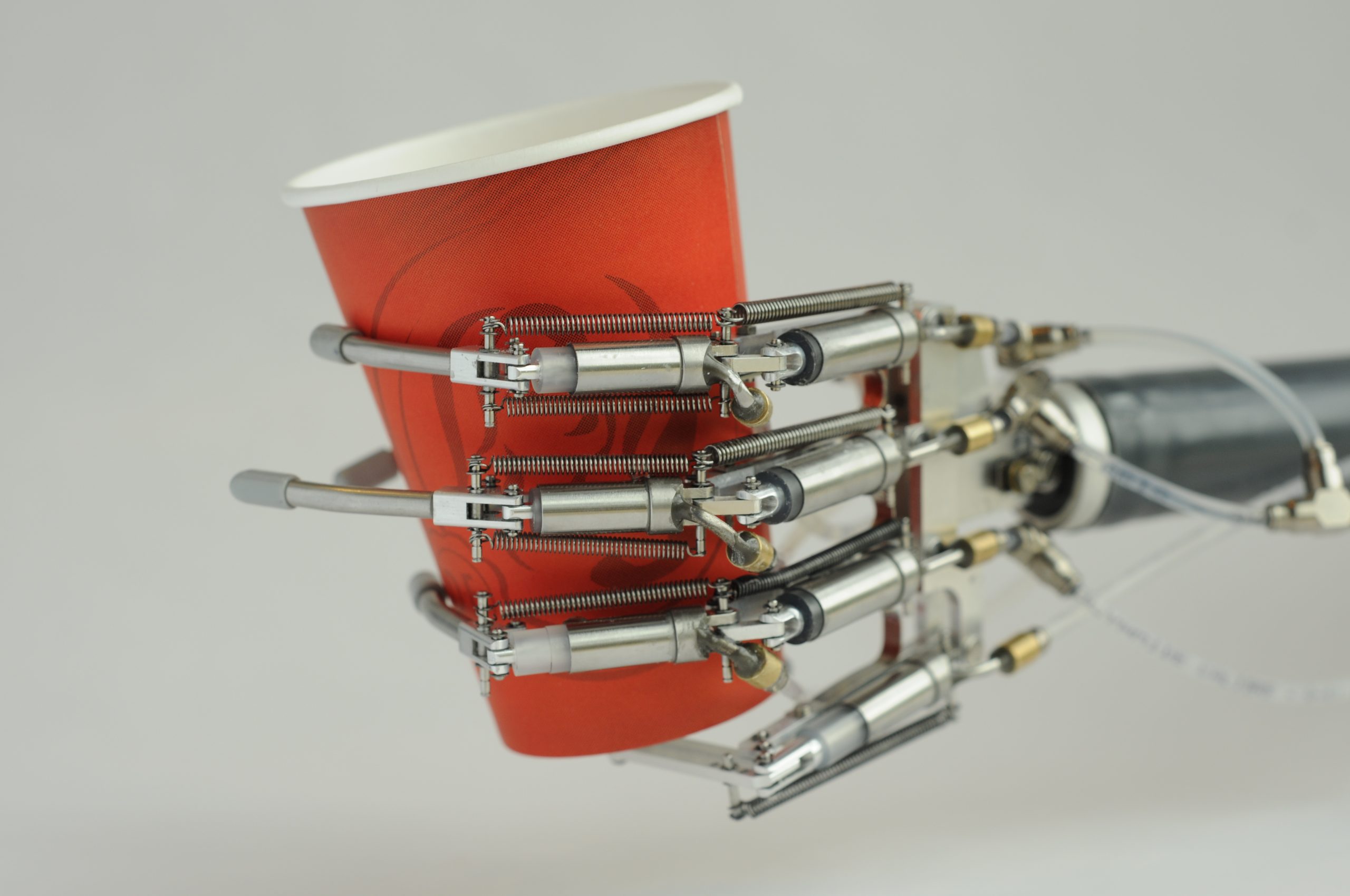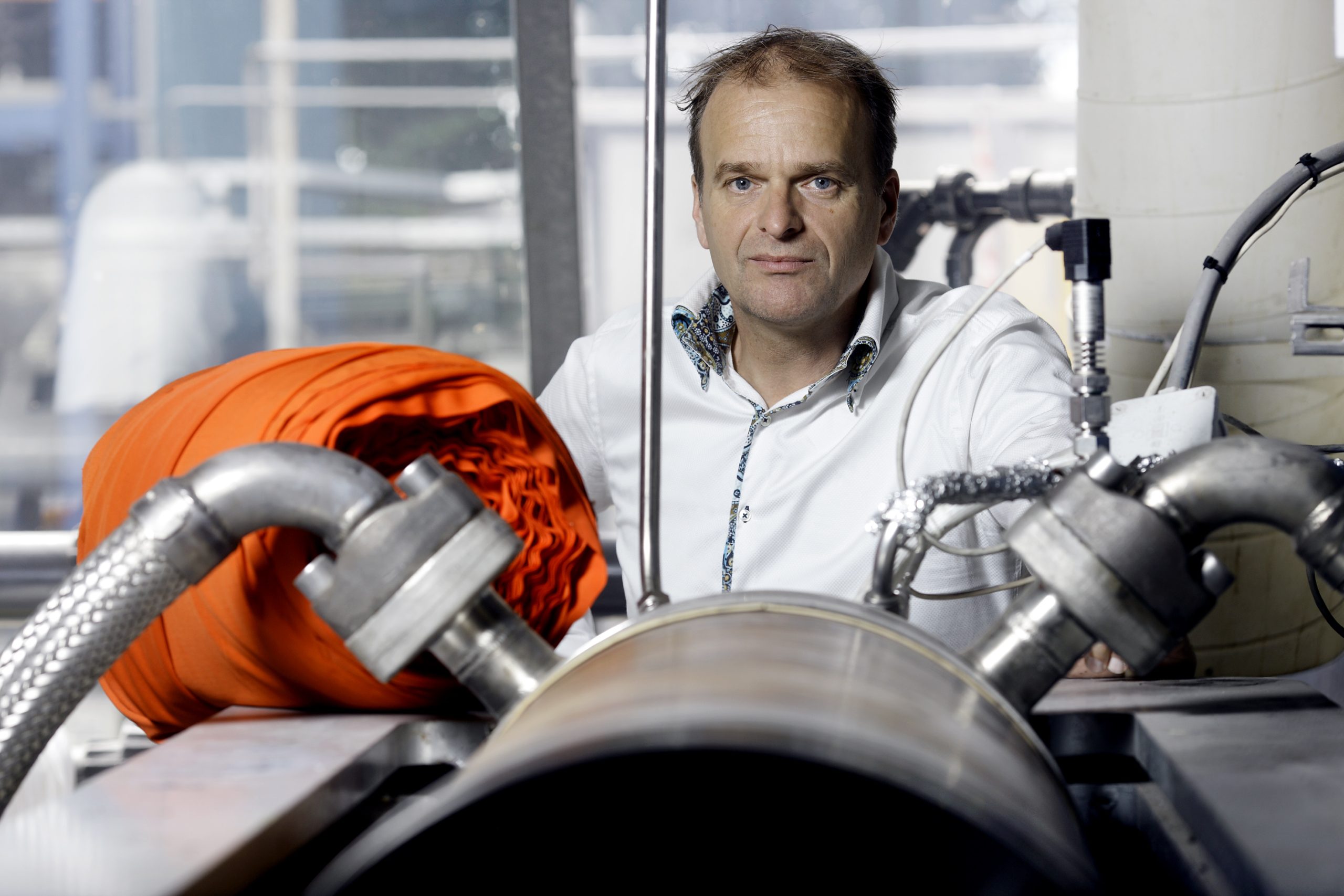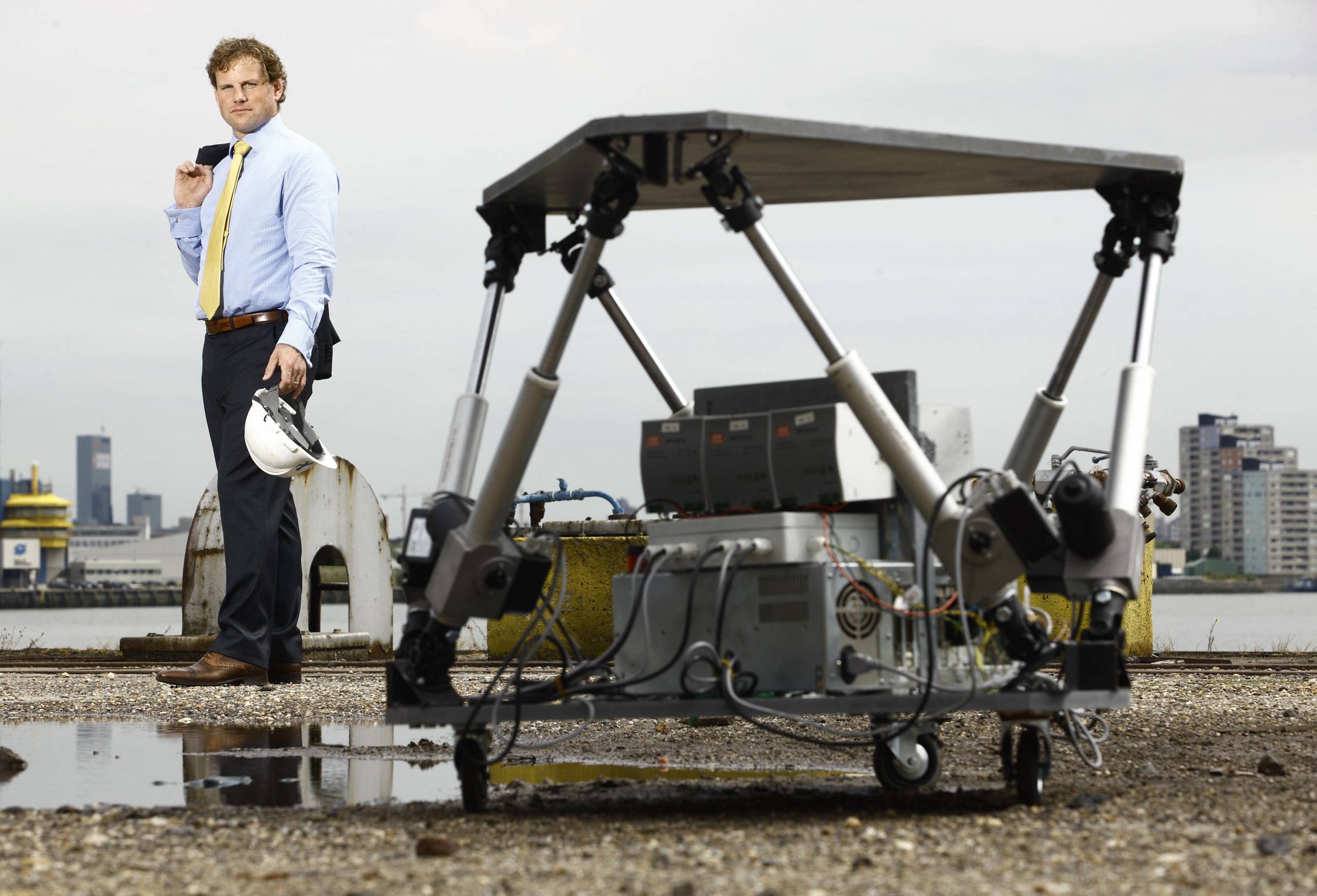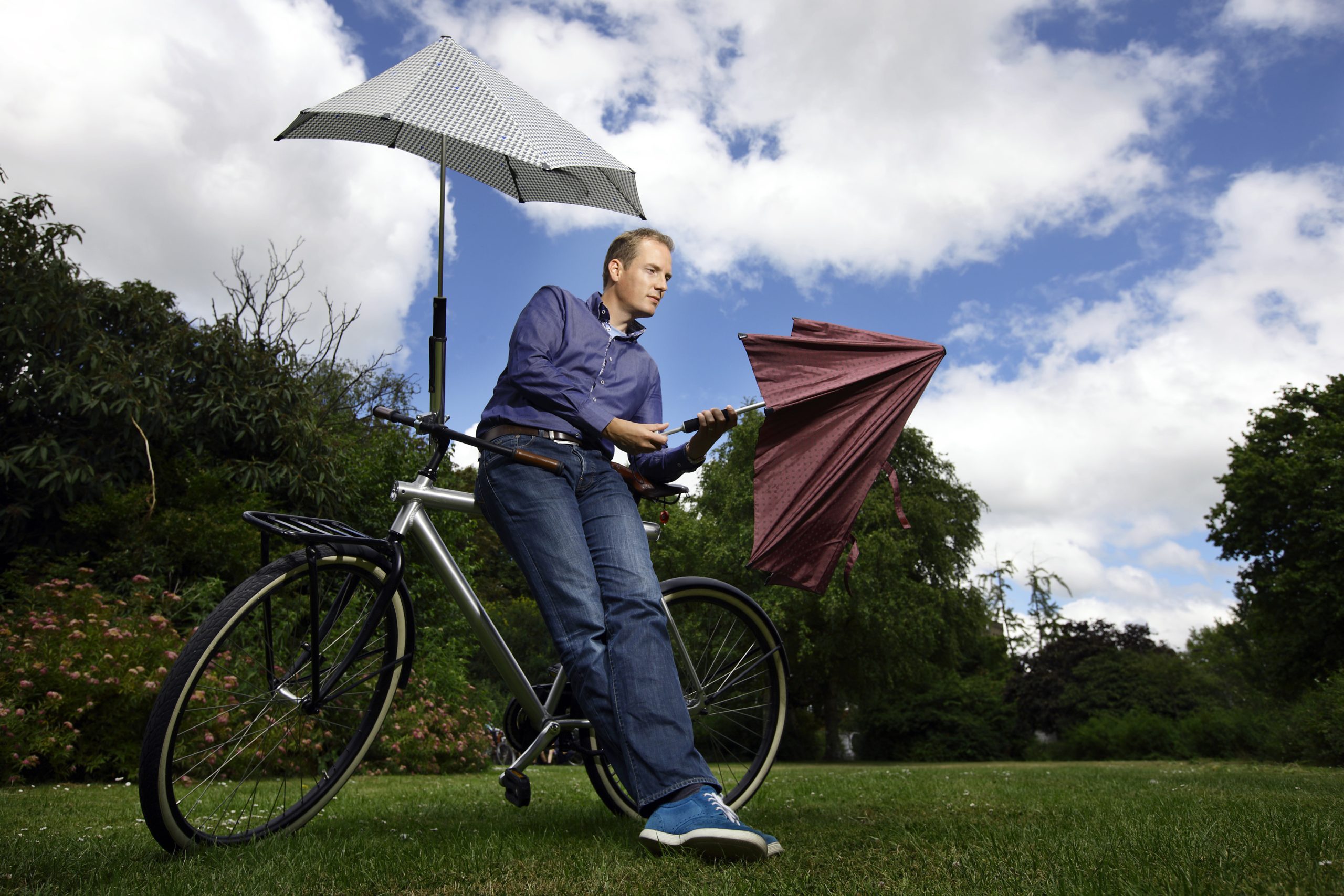As a technical university, TU Delft is the highest ranking Dutch university, third highest European university and 42nd overall in the World Reputation Rankings of Times Higher Education magazine.
What makes TU so special? What is it about this university that inspires success? We talk to four TU Delft alumni who discuss their companies and products and what role the university played in their research and development.
If you do not recognise the name senz° umbrellas, you will definitely recognise the shape of their unique umbrellas. The umbrellas are designed to be used in all weather, including wind, without collapsing or turning inside out. Company founder Gerwin Hoogendoorn came up with the idea for his industrial design engineering master’s project idea out of sheer frustration. He had three traditional umbrellas break in one week.
After some research, he discovered that the umbrella’s original design had not changed since the Egyptians invented it around 3,400 years ago. He figured it could use a little updating. Armed with his idea, Hoogendoorn approached several umbrella companies for his master’s project. Not one was interested, stating that the traditional design was fine. With 1.1 billion umbrellas produced in China each year, the companies were happy with their bottom line. This massive number also pointed to the fact that a lot of umbrellas were being thrown away and the consumer was forced to purchase another poorly designed umbrella. “The round shape was a design flaw. It could be pushed over from any side,” explained company co-founder Gerard Kool. Instead, Hoogendoorn got permission to go it alone.
The facilities and resources at TU Delft allowed him to conduct an in-depth graduation project. He credits the multidisciplinary makeup of TU Delft for the array of testing available to him. For example, he was able to do material testing as well as wind tunnel testing right on campus. In the end Hoogendoorn’s prototype was even more advanced than what is on the market today.
Inspired to take his product further, Hoogendoorn recruited Gerard Kool, a classmate that he had done projects with, after meeting him again at the faculty bar. He also recruited Philip Hess, a TU Delft alumni studying business education at Erasmus University in Rotterdam, whom he knew through playing basketball. With his two trusted co-founders, senz° umbrellas was formed. “In the first wind tunnel testing I thought that it was possible, that we really had something,” says Kool who is now in charge of finance at the company.
senz° umbrellas went on to win several major design prizes including RED Dot, IDEA and iF Design Awards and compete in NewVenture, an important business plan competition that got them a deal with Mexx to initially put their product on the market. Afterwards they set off independently with a webshop and, essentially, crowdfunding. The umbrella took off.
Not forgetting their roots, seven years later senz° umbrellas continues to have a relationship with TU Delft. They were the first company to set up their headquarters at the Yes!Delft building. They also have a programme to hire student interns from TU Delft.
“We started and we never stopped doing what we love. We created a product and put it into the market independently. It’s an ongoing process of reinventing ourselves,” says Kool. The company is now moving forward with new products and accessories.

A better hand
TU Delft postdoctoral researcher Gerwin Smit is another successful innovator coming from the TU Delft. After completing his master’s in biomechanical engineering at University of Twente in Enschede he came to TU Delft for his PhD and focused his studies on prosthetic hands. “Currently 40% of people are not wearing their prosthetic hand because it is too heavy, uncomfortable or too difficult to control,” explains Smit. Introduced to the field by his co-promoter Dick Plettenburg and into his network, Smit began working on the problem.
One of the most popular hand prosthetics currently in use is a body-controlled device design which does not even look like a hand. The design is 100 years old. More recent models are more lifelike and electrically controlled, but with motors and extra components, the model is criticised as being too heavy. Smit wanted a prosthetic that was simple and light. He set his sights on hydraulics. Other devices that used to work with pulleys and cables have been modernised by the use of lightweight hydraulics, making them the perfect fit for a light, highly articulated prosthetic.
Smit approached hydraulic fabricators for the size he needed. “For prosthetic application I would need very tiny cylinders which would fit inside a finger. These cylinders turned out to be non-existent. Therefore I decided to develop my own micro-hydraulic cylinders,” explains Smit. He went on to design the cylinders himself after consulting with colleagues in the department. The parts for the cylinders were made in the faculty workshop. The resulting cylinders have many other potential applications as well.
Conducting his research in the Biomedical Engineering department in the 3mE faculty, Smit was able to bring his idea to life. He credits TU Delft for enabling him to visit international conferences where he could establish international contacts. “Moreover, do not forget all the available resources like workshops, measurement shops, helpful assisting staff, a great library, access to virtually all scientific literature, etc, etc,” says Smit.
As a speaker at TEDxDelft, Smit introduced his lightweight, incredibly articulate, body-controlled, intelligent pressurised prosthetic hand to the popular world. A second generation model of the Delft Cylinder Hand is expected to be complete by the end of this year. This version will be tested by people at home during their daily lives and the project has multiple enthusiastic volunteers.

The fabric of science
Another success story from TU Delft is Geert Woerlee founder and CEO of FeyeCon. With a master’s degree in physics and a PhD in applied sciences, he has revolutionized the manufacturing process of dyeing fabrics. He has replaced the regular dyeing process with a water free solution.
“TU Delft was involved in the development between 2000 and 2007,” says Woerlee. “Three prototypes were developed through that period.” It started with research and development in early 2000 and soon, he had a small prototype to test. By 2009, an industrial size prototype was in the works. Instead of using millions of litres of water in the dyeing process, the technique makes use of supercritical fluid carbon dioxide to introduce the dye to the fabric. The leftover CO2 is then recycled back into the closed loop system to be used again. The process uses half the amount of dye, less energy and costs 40-60% less money, making it sustainable for the environment and cost effective for the company.
This game changing technique was the start to Woerlee’s entrepreneurial success. YES!Delft helped with the start-up FeyeCon where Woerlee is the CEO. The company has resulted in many spin-offs including DyeCoo, Clean Algae, Tispa Medical and Echo Pharmaceuticals and Woerlee sits as an executive board member of them all. Nike and Adidas have both partnered with Woerlee to begin using the dry dyeing in their manufacturing.

Six degrees of motion
Don’t think too small at TU Delft either. In 2002, two TU Delft PhD students were casually discussing the difficulties associated with offshore access over beer at an offshore wind conference in Berlin. A presentation they had seen earlier at the conference highlighted the real challenges posed by moving people or freight from boats to a fixed structure especially when the weather was poor. During the conversation, the idea for a flexible gangway was born. One of those two students was Jan van der Tempel who is now the CEO of Ampelmann Operations.
Ampelmann has developed a motion-compensated gangway that takes into account the six degrees of motion. The name Ampelmann comes from the pedestrian figures on Berlin traffic lights. With this gangway, one can safely traverse from vessel to fixed structure or between vessels in any type of weather the sea has to offer. “It is significantly important for wind and oil and gas companies as it means their platforms and wind turbines can be accessed at all times. Renting an Ampelmann is more cost effective that hiring helicopters, jack-ups or larger vessels,” explains Eveline Huizink who is in charge of business development support at the company.
TU Delft and the department of Delft Center for Systems and Controls (DCSC) played a major role in the company’s research and development. In conjunction with TU Delft, a patent was applied for and the first Ampelmann system was developed. They gained access to a flight simulator and hexapods for testing and the wave basin for sea simulations. The TU Delft offered a course in entrepreneurship where the founders learned, among other things, to write a business plan. “TU Delft is a unique entity which offered us the opportunity to become who we are,” says Huizink. They are currently a company at YES!Delft. Ampelmann is moving forward with expanding internationally. By increasing their product they hope to make offshore access as easy as crossing the street.



Comments are closed.